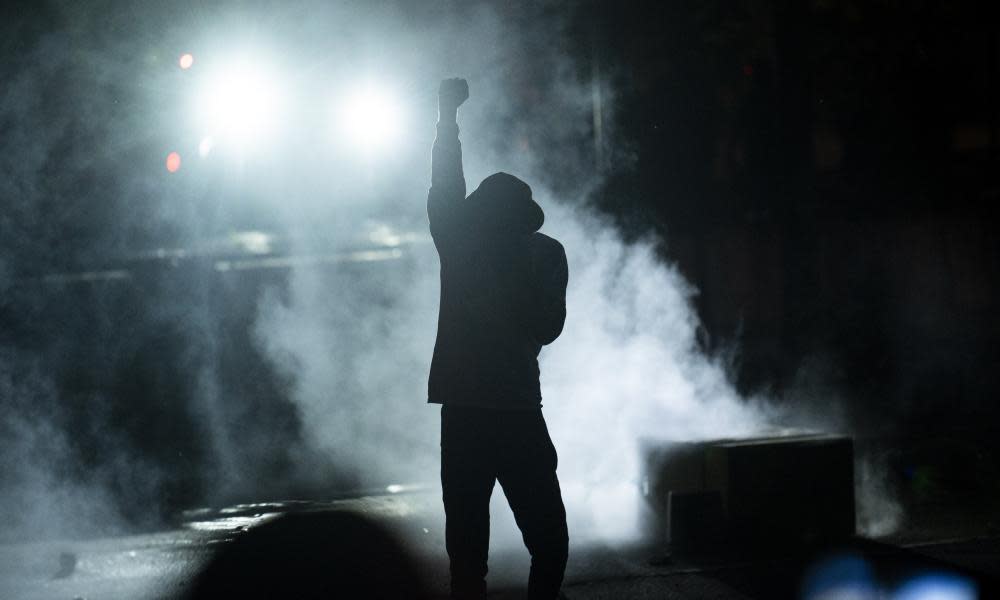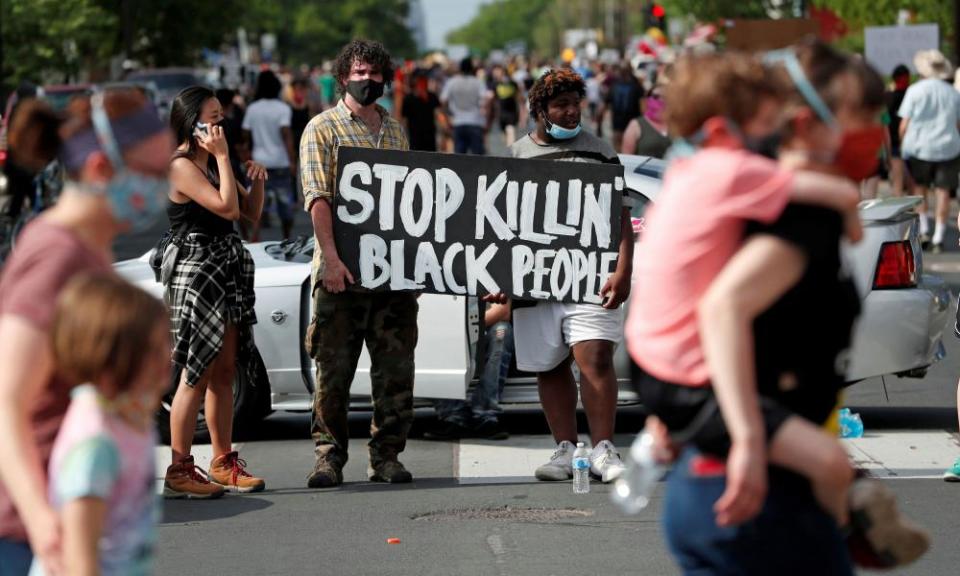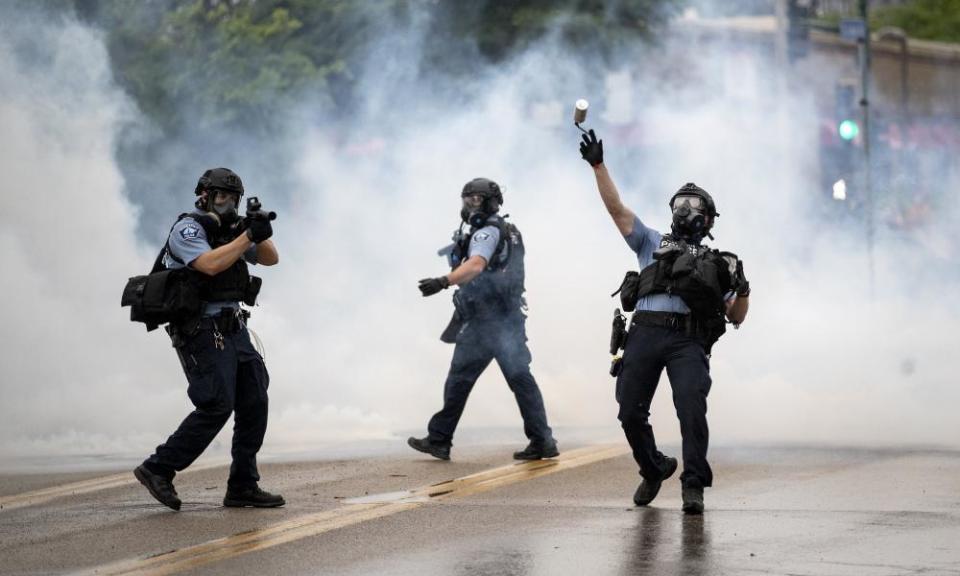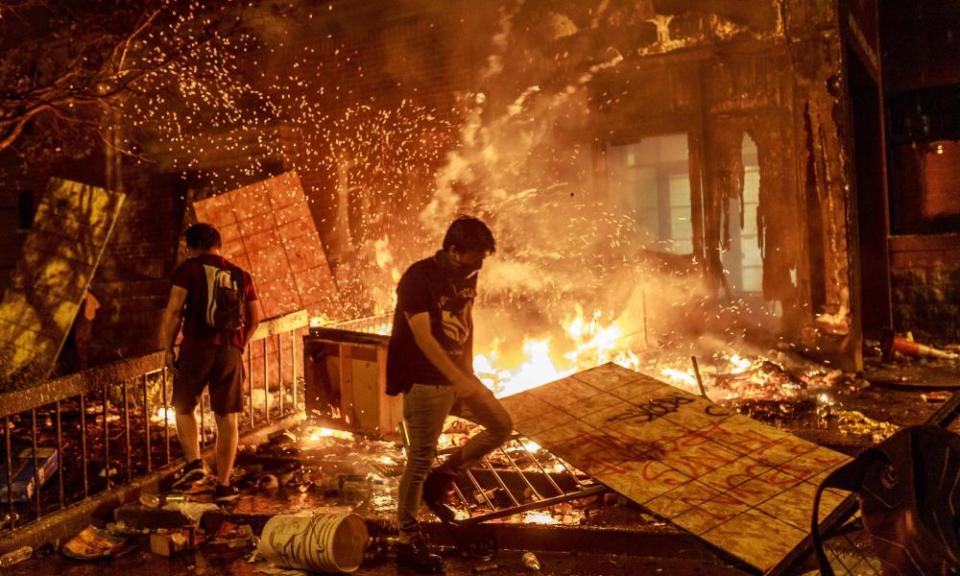George Floyd killing: what sparked the protests and what has the response been?

The United States is undergoing a reckoning on race and police brutality after footage went viral of a white police officer kneeling on the neck of a black man who later died in custody.
Related: Night of flames and fury as Minneapolis swells with outrage over George Floyd killing
Protests have flared up across the US as people demand the arrest of the officers involved in the killing and for systematic change that will put an end to police brutality. After clashes with the police on Wednesday, some protesters set buildings on fire and ransacked stores. Here’s what we know so far.
What prompted the protests?
Protests erupted on Tuesday in Minneapolis, Minnesota, after word got out that George Floyd, 46, a black man, had died in police custody Monday night after a white police officer knelt on his neck, apparently suffocating him.
In graphic footage of the incident shared on social media, Floyd can be heard shouting “I can’t breathe” and “Don’t kill me!” as the officer continued to kneel on his neck until medical personnel arrived. On Tuesday, the Minneapolis police department confirmed that he died “a short time” after a “medical incident” once he was transported to hospital.
The officers were responding to a call from a grocery store that claimed Floyd used a forged check. Police said he “physically resisted officers” once police located him inside his car.
Four police officers who were at the scene were fired on Tuesday, and on Friday, the officer who appeared to suffocate Floyd was arrested. But the apparent delay in taking action fueled long-held anger over the continuation and inaction in cases of police brutality against black Americans in the United States.
What other incidents sparked the protests?
The police killing of George Floyd comes on the back of two other high-profile killings of black Americans that have come to light in recent weeks.
Video footage of the murder of Ahmaud Arbery, 25, from 23 February began circulating in early May. Arbery was jogging through a neighborhood outside of Brunswick, Georgia, when he was shot dead by two white men, a 64-year-old father and his 34-year-old son, in a pickup truck who were pursuing him. The men were charged with murder and aggravated assault and arrested on 7 May, more than two months after the incident, and only after footage of the incident went viral.

Just a few weeks after Arbery was murdered, Breonna Taylor, a 26-year-old certified EMT, was killed in her home by police officers who were serving a “no-knock” warrant for a narcotics investigation on 13 March.
Taylor’s boyfriend, Kenneth Walker, said he believed he was witnessing a home invasion when police broke down their apartment door. Walker picked up his gun and fired a shot that hit an officer in the leg. In response, officers responded by firing more than 20 times. Taylor was hit by eight rounds and killed. Walker said the police did not knock or announce themselves while the police department said the officers did. The three officers who were involved in the incident were reassigned pending an investigation.
Where are the protests?
Protests have taken place all around the US, as they have since news of Arbery’s murder began to spread earlier in May.
The killing of Floyd was the tipping point for the larger, more dramatic protests that have taken place this week. The largest demonstrations have been in the Twin Cities, Minneapolis and St Paul, where peaceful protests have turned into riots following clashes with police. Other protests have taken place in Denver, Chicago and Oakland. In New York City, at least 70 protesters were reportedly arrested after demonstrators clashed with police.

What’s been happening during the protests?
“I can’t breathe” has become the rallying cry for demonstrators, bringing back a phrase that was used in protests around the police killing of Eric Garner in New York City in 2014.
In Minneapolis, hundreds marched on Wednesday from the site of the confrontation between the police officer and Floyd to the police precinct where the officer was based.
When the protest reached the police precinct, officers dressed in riot gear clashed with demonstrators. Videos showed protesters throwing rocks and bottles at police vehicles and police officers using teargas, smoke and flash bombs and rubber bullets against the protesters.
On Thursday, looting began in parts of Minneapolis and St Paul. Target closed all of its locations in the two cities after it became the focus of looters who ransacked the store.

Protests in Minneapolis took its most dramatic turn Thursday night when demonstrators set ablaze a police precinct. The city ordered the evacuation of the building amid unconfirmed reports that explosives were in the building. The building continued to burn into the late hours of the morning.
In downtown Columbus, Ohio, protesters began to break the windows of local shops and the front doors of the state capitol after clashes with police.
What has response to the protests been?
Just past midnight on Friday morning, Donald Trump tweeted that he sent the National Guard to combat the protests in Minneapolis, criticizing the city’s “radical leftist” leaders and threatening a crackdown against demonstrators. “When the looting starts, the shooting starts” the president wrote in a tweet that has since been hidden by Twitter for “glorifying violence”.
Local leaders have denounced calls for violence against protesters. But in a press conference on Friday, Minnesota’s governor, Tim Walz, said that restoring order is crucial to begin repairing societal injustices.
“The ashes are symbolic of decades and generations of pain and anguish unheard,” Walz said. “George Floyd’s death should lead to justice and systemic change, not more death and destruction.”
In a statement, Floyd’s family said they want peace but understand the pain their community is feeling over inaction.
“They told me they want peace in Minneapolis, but they know that black people want peace in their souls and that until we get #JusticeForFloyd there will be no peace,” the family’s lawyer, Ben Crump, said in a statement. “We also cannot sink to the level of our oppressors and we cannot endanger each other as we respond to the necessary urge to raise our voices in unison and outrage.”

 Yahoo News
Yahoo News 
